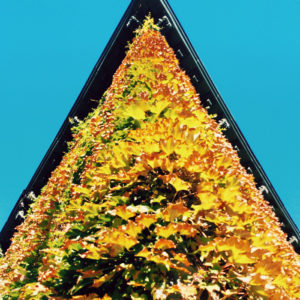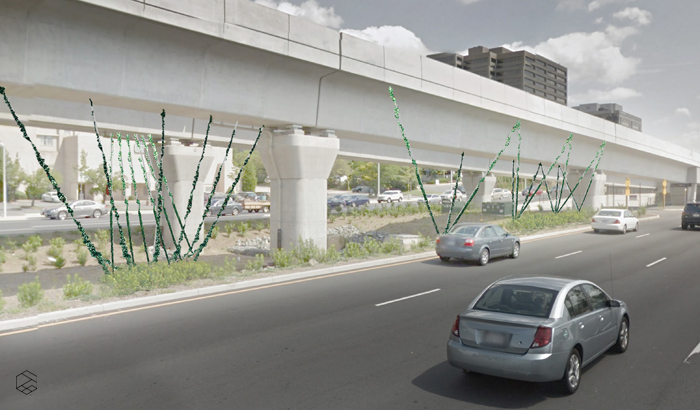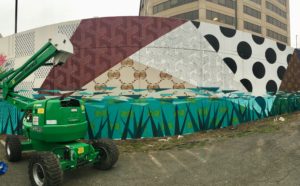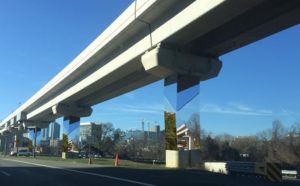As a follow up to the previous post on disguising the pylons, and some of the feedback from YOU (!) the community, I thought it was timely to examine the option of using plants and landscaping to diminish, conceal, or otherwise alter the visual presence of the Metro pylons.
Trees planted under or closely adjacent to the tracks are an inevitable maintenance issue, with the canopy eventually conflicting with the Metro line. Additionally, trees planted along major roads are frequently replaced more than once before one successfully establishes. Large woody shrubs are a good option for screening under the tracks and around the pylons, however they can take considerable effort to establish or become overgrown and a fire hazard.

In many ways, vines are the perfect urban vegetation, requiring less soil than trees or shrubs, frequently able to establish and thrive in conditions other plants would struggle, and of course their vertical habit. With their ability to quickly cover a wall, fill in shade, or screen a view, they bring much needed plant life to otherwise architectural environments. Certain species of vines trained on cables can provide a flexible solution, attached with small anchors and tensioned with turn-buckles, making plants easily maintained and replaced. Below is a sketch of vine and cable system iterations in the Rt. 7 median.

Vines have a natural logic that can be beautiful. We have all seen the sales renderings of a lush wall of vines, and sometimes a client ends up disappointed. One basic division of vines is into ‘climbing vines’ and ‘twining vines’. Climbing vines, such as climbing hydrangea, english ivy and other vines that ‘cling’ to walls, can climb textured vertical surfaces like brick and plaster, but they may eventually damage the surface. These vines are also frequently evergreen, providing year-around coverage.

Twining vines, such as clematis, akebia, and wisteria are suitable for trellises, as they require a framework to grow on. They also tend to be deciduous, losing their leaves in the fall, but they are also often known for showy flowers and ecological value. Deciduous vines used on the popular ‘greenscreens’ can leave it lacking in the winter. Additionally, because deciduous vines rely on a few growing months to sustain them for the year they are more phototropic, causing the foliage to gather towards the sun, leaving the lower stems woody and bare.
A lush wall or trellis can be achieved under ideal conditions with one species of vine, but more commonly a combination of vines can be used to get the desired affect. Where trees spread too wide, or have limited root space, various vines can climb and twine their way towards the sun, providing flowers, ornamental fruits, and an enhanced experience of the urban environment. Ultimately, vines are a versatile and dynamic solution to the constraints of the urban environment. Either on the pylons, along the face of parking garages, shading a walkway, or blurring the distinction between the ground plane and the architectural facade, vines are the solution to bringing plants into dense urban areas.




